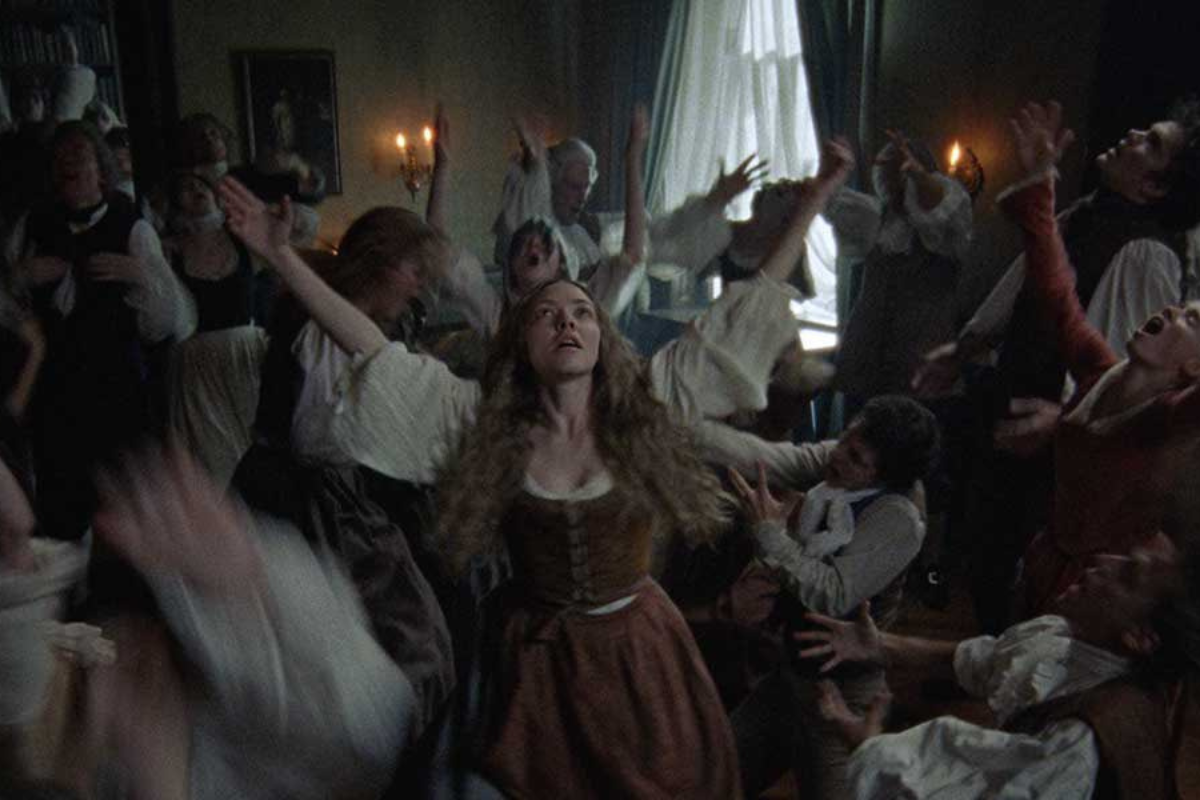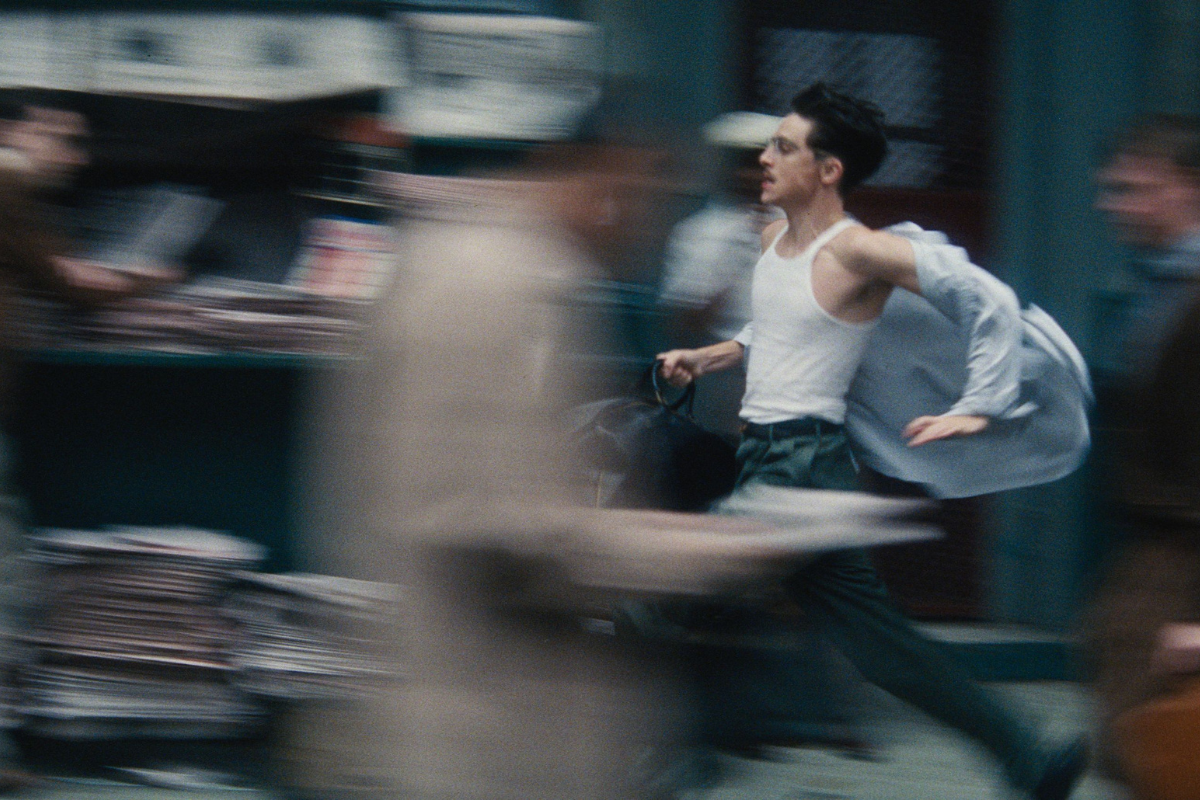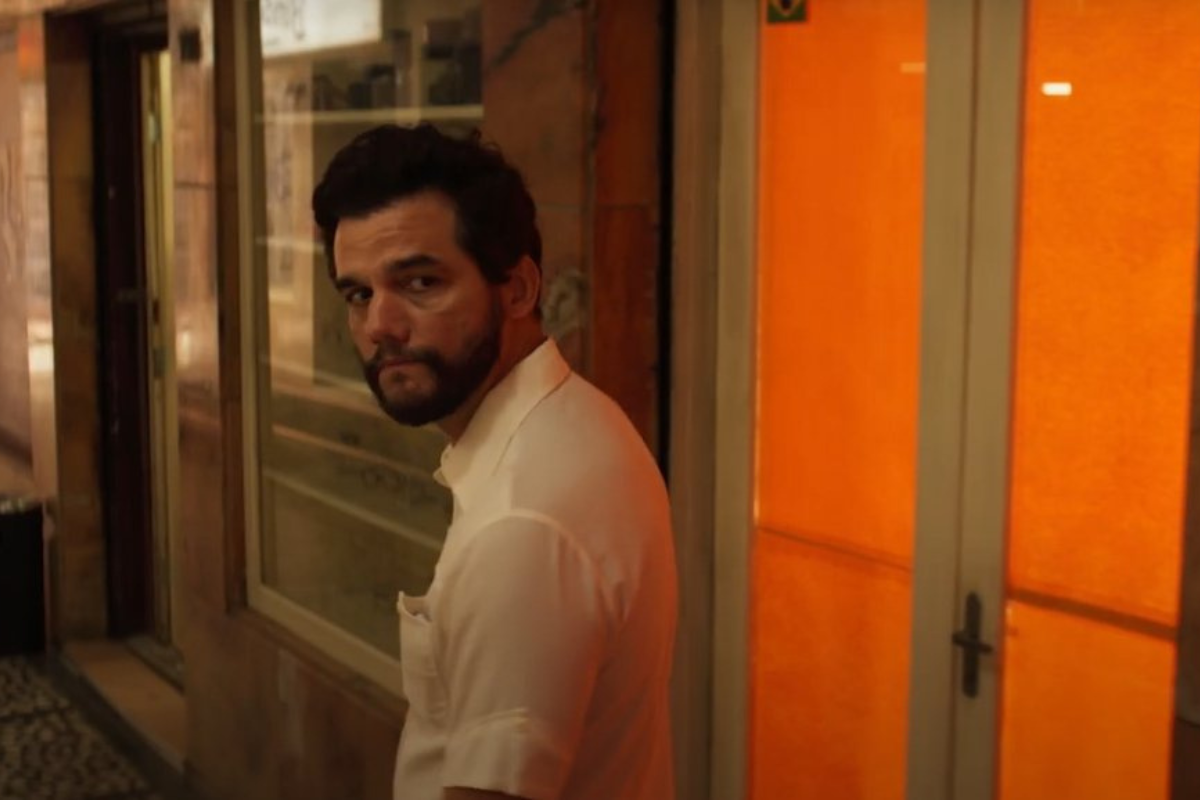UNDERSTANDING SCREENWRITING: Cars and People
We start with a lot of cars, then a bunch of people and their feelings: ‘Fast X,’ ‘You Hurt My Feelings,’ ‘No Hard Feelings,’ ‘Book Club: The Next Chapter.’
They are Messing with the Office Pool.
Fast X (2023. Screenplay by Dan Mazeau & Justin Lin, story by Dan Mazeau, Justin Lin and Zach Dean, based on characters created by Gary Scott Thompson. 141 minutes)
You may remember that in my review of F9: The Fast Saga (you can read it here) I had a little fun with the fact that the word “family” is not spoken until 50 minutes into the film, messing up people who had much earlier in the office pool.
Well, the filmmakers are having fun with us again. After the big opening action scene (a sequence from Fast & Furious 6, more on which later), we have the “family” having dinner at their home in East Los Angeles. New, to us, at the table is Rita Moreno as Abuelita. Abuelita is Spanish for grandmother, but it is not exactly clear whose grandmother she is. It may be clearer in the Spanish dialogue. You can see where this is going. Nobody says the word “family,” but they do say the word “familia.” You can guess what that is Spanish for. If you had familia in the office pool, you win.
By the way, in this dinner scene, Michelle Rodriguez smiles more than she has in all the previous Fast episodes. She may be taking the suggestion in my review of Dungeons & Dragons: Honor Among Thieves (2023) that she is the new America’s Sweetheart a little too seriously.
OK, on to the serious business at hand. The scene from #6 is the big heist scene where our guys are dragging a very large safe through traffic. The safe belonged to the drug lord Hernan Reyes. It turns out he has a son, Dante, who has now been edited in the old footage. He is now out for revenge against Dom…and his whole family. Dante, beautifully overplayed by Jason Momoa, is one of those villains who will do anything, ANYTHING I tell you, to cause trouble for Dom.
One of the problems I had with F9 is that the writers had not figured out how to balance all the characters they had to deal with, including Jakob, a newly discovered brother of Dom. When you have all the regular characters, plus the new one, plus the ones who have miraculously come back from the dead, it was a juggling act that those writers did not pull off as well as they needed to. The writers here make it a better balance. I wish there was more of Roman and Tej, who have had a nice vaudeville act of conversation and comment. But at least they do not get sent into space as they did in F9.
In F9 Ramsey, the computer geek had to drive some of them out of trouble, although she had never had driving lessons. She gets another driving scene here, but it appears she has had driving lessons since F9, which makes this scene less fun.
One thing I particularly liked about F9 is that the action was more stunt-oriented than CGI. Here there are a lot more CGI scenes. Some of them, like the sequence at the dam at the end, are spectacular, but a lot of them are mostly overkill.
There is also a stretch about an hour into the film that is simply one fistfight after another. Yes, they are with different characters, but still repetitive.
Oh, and don’t get too worried near the end where you think some of the family have been killed. After all, the Fast franchise has brought more characters back from the dead than Pirates of the Caribbean ever did.
No Cars, Just People.
You Hurt My Feelings (2023. Written by Nicole Holofcener. 93 minutes)
I happened to see this the day after I saw Fast X, and what immediately struck me is that nobody in this film drives a car or even rides in one. There is a brief reference to Uber, but we don’t see anything. Like the folks in a Woody Allen movie, the people here all walk around New York City (and do not run into Woody and Soon Yi, who have apparently left town). There are cars in the streets, but it being New York traffic they do not appear to go over 20 miles an hour.
Holofcener’s last film was the terrific Enough Said (2013), which I reviewed here. You can get from that review what I thought of Holofcener’s work not only on that film, but on some of her earlier work. In that review, I mentioned that the biggest flaw in the film was Holofcener’s direction. She seemed to put the camera in the wrong place and some of her stuff did not cut together well.
So what has she been up to since? Directing television, including episodes of Inside Amy Schumer (2015), Orange is the New Black (2015), Mrs. Fletcher (2019), and others. And guess what? Her direction of You Hurt My Feelings is much, much better than Enough Said. How do you get to Carnegie Hall? Practice, practice.
If that is not enough, her script here is one of her best. Her early ones were very loosely constructed. Enough Said was a much better script and created two great parts for James Gandolfini and Julia Louis-Dreyfus. In the new film, Holofcener has written an even better role for Louis-Dreyfus. Here she is Beth, an author in a very, very happy marriage. Well, you can guess what’s going to happen, but you would probably be wrong. Her first book was a memoir that did not do that well. It was about her father, who was verbally abusive to her. As she tells her mother in the present, the book would have done better if he was more than just verbally abusive.
She is at work on her second book, a novel, and she is several drafts in. Don, her psychiatrist husband, has told her he likes the book. But one day Beth and her sister Sarah spot their two husbands in a store. Beth comes up behind them just in time to hear Don tell Mark he does not really like the new book. In the 1978 film, An Unmarried Woman, Erica has her husband tell her he is in love with another woman. Erica goes around the corner and throws up in a trash barrel. Here Beth goes around the corner, thinks she is going to throw up, but decides she’s not. It is funny even if you have not seen An Unmarried Woman.
So what’s the big deal? Beth’s whole sense of herself is as a writer, and Don has just inadvertently shot that full of holes. So Beth and Don try to work it out.
You are probably saying at this point that does not sound like a feature film. But it is, because Holofcener develops the idea (like she brilliantly did in Enough Said; see my review again), which brings in Sarah and Mark, Beth and Don’s son Eliot, as well as several of Don’s patients. Each one of them have told or have had told to them something they find out is not true. The richness of the film comes from all the ways Holofcener shows us the variety of characters dealing with this one issue. Her longtime feel for characters works for her beautifully here.
Holofcener’s casting is right on the money. This is probably Louis-Dreyfus’s best performance, and she is matched by Michaela Watkins as Sarah. You can completely believe these two are sisters. A few columns ago I wrote about a movie called Montana Story (2021) and I said in my review that “Cal is played by Owen Teague, who is too bland to hold the screen either with [Haley] Richardson or in several scenes on his own.” Teague is Eliot here and he more than holds his own with Julia Louis-Dreyfus. Either he has learned how to act for the screen, or perhaps it is that Nicole Holofcener is just as good a director with male actors as she is with female actors.
No, Not a Sequel to the Above.
No Hard Feelings (2023. Written by Gene Stupnitsky & John Phillips. 103 minutes)
When I saw the first trailer for Erin Brockovich (2000), my reaction was that was the part Julia Roberts was born to play.
I had the same reaction to the first trailer I saw for No Hard Feelings: this is the part Jennifer Lawrence was born to play. That reaction continued when I saw the film, but the script is not flawless. Well, neither was the script for Brokovich, but it was better than this one.
Lawrence plays Maddie, a sassy bartender/Uber driver whose car is towed away for unpaid taxes. Looking online for another job, she finds an ad from a wealthy couple who want a young woman to “date” (and date is used in quotes a lot in this script) their 19-year-old son who is going off to Princeton in the fall but is an introvert. Maddie: “You want me to date him or ‘date’ him?” Mother: “Date him hard.” Maddie: “I’ll date his brains out.”
If you have seen the trailer, it is mostly material from the first half of the movie: the slapstick comedy half. In the second half, Maddie and Percy are becoming friends. There is no reason the writers could not have continued having raunch in those scenes, but they haven’t. By now we love these characters and want them to be friends, but we miss the raunch.
This may not sound like an example of Puritanism in American film (see below for an example of that), but it is. It is way late in the film when Maddie and Percy have their “first sex.” It is a funny scene, truthful but not what you expect. It includes, among other things, a stuffed animal used, brilliantly by Lawrence, in a way you have probably not seen before. And not the way you are thinking. It would have been better if the scene had happened earlier, and then their sexual relationship developed from there.
I noticed that there are two “intimacy coordinators” on the credits for the film, but I am not sure how much they were needed for what we see on the screen. Like so many American films, it is raunchier in its dialogue than in its action. This is a film that could have gone further visually without becoming so graphic it would turn people off.
As indicated above, the main reason it works as well as it does is because of J Law’s comedy chops. Her line readings are fast and funny and more than once take us by surprise. She is also great at physical slapstick, including a fight on the beach with a trio of teen boys who have stolen her clothes while she and Percy are skinny-dipping. It is the one fully nude scene in the film and it fits perfectly into the tone of the first half of the film.
Lawrence is not working alone in the film. Percy is brilliantly played by Andrew Barth Feldman. His chemistry with Lawrence is terrific. The rest of the cast is excellent. Percy’s parents are played by Matthew Broderick and Laura Benanti. I was afraid that after their first scene, we were not going to see much of them, but they have a great scene when they finally send Percy off to Princeton.
The film does falter in the last twenty minutes or so by dragging in several subplots that could have been handled quicker if they need to be in the movie at all. The final scene, between Maddie, Percy, and, well, I won’t tell you who or what, is a perfect ending for the movie.
This Week’s Jane Fonda Movie.
Book Club: The Next Chapter (2023. Written by Bill Holderman & Erin Simms. 107 minutes)
Holderman & Simms wrote (and Holderman directed, as he does here) the 2018 Book Club. I saw it and enjoyed it, but I did not review it, I think because it came out while my column was temporarily homeless. Since I liked the first one, and I like all the actors, I gave the sequel a shot. It is not up to the original.
Holderman and Simms wrote themselves into a corner with the first. It was about four women of a certain age (or older, depending on how you count) who read Fifty Shades of Grey and find their love lives revitalized. The problem this creates for the sequel is this: if they are in happy relationships, are we going to want to see them screwing around on the side? Sharon, the retired judge, is no longer attached, so at least in this one she gets to shag a charming Italian in the boat in one of the Venice canals. Yeah for geezer sex!
A few weeks before I saw this film, I happened to catch on Turner Classic Movies (I am not too worried about the survival of TCM, if Spielberg, Scorsese, and F.F. Coppola are telling Warners not to kill it; I am assuming the new head of Warners does not want to find a horse’s head in his bed) the 1962 romance Rome Adventure. A young woman college teacher decides to go to Rome to learn about love, but because it was the early sixties, Delmer Daves, the screenwriter, has to work extra hard to keep her from having actual sex. I would have thought by now we could have gotten away from all that, especially with grown-ups like Jane Fonda, Diane Keaton, Candice Bergen, and Mary Steenburgen. American Puritanism may not be completely dead.
The Next Chapter falls into another mistake Rome Adventure made. Instead of using the Italian locations for scenes, the scenery is mostly second unit stuff without the actors. Roman Holiday (1953) on the other hand does it right. Each location is carefully picked for a particular scene. If you have seen Roman Holiday, you will always remember Audrey Hepburn eating gelato on the Spanish Steps. In The Next Chapter, the four women are at the Spanish Steps but don’t do anything but chat.
Ah yes, the dialogue. The dialogue in what we take to be the comedy scenes is very imprecise. It feels improvised; there are occasionally funny lines, but not that many. Those scenes seem a waste of the mega-talent that they have on the screen. On the other hand, the scenes that have a more slightly dramatic feeling, such as the one with the four women in the car, are better shaped and focused. One of those scenes is a speech that Don Johnson gives to Fonda near the end of the film. It is very well written and gives Johnson one of his best scenes on screen in years.
Learn more about the craft and business of screenwriting and television writing from our Script University courses!
Tom Stempel is a Professor Emeritus at Los Angeles City College, where he taught film history and screenwriting from 1971 to 2011. He has written six books on film, five of them about screen and television writing. You can learn more about his books here. His 2008 book Understanding Screenwriting: Learning from Good, Not-Quite-So- Good, and Bad Screenplays evolved into this column. The column first appeared in 2008 at the blog The House Next Door, then at Slant, and then Creative Screenwriting before it found its forever home at Script.
In the column he reviews movies and television from the standpoint of screenwriting. He looks at new movies, old movies, and television movies and shows, as well as writing occasional other items, such as appreciations of screenwriters who have passed away, plays based on films, books on screenwriting and screenwriters, and other sundries.
In September 2023 Tom Stempel was awarded the inaugural Lifetime Achievement in the Service of Screenwriting Research by the international organization the Screenwriting Research Network.







